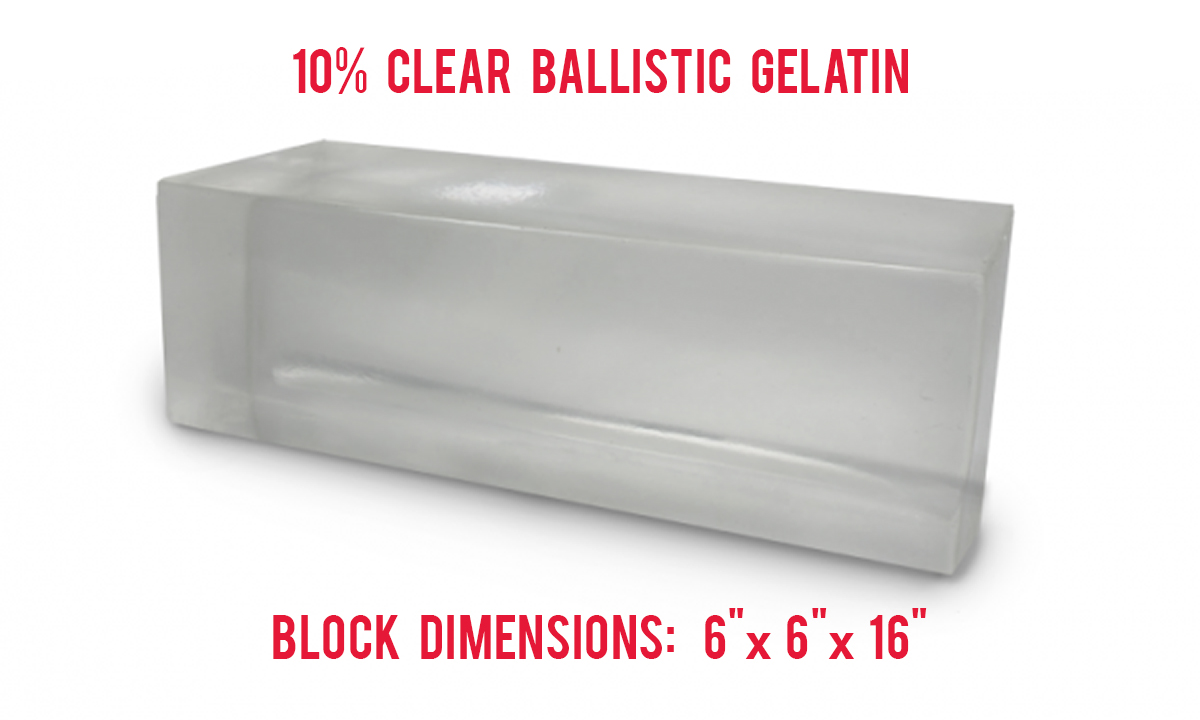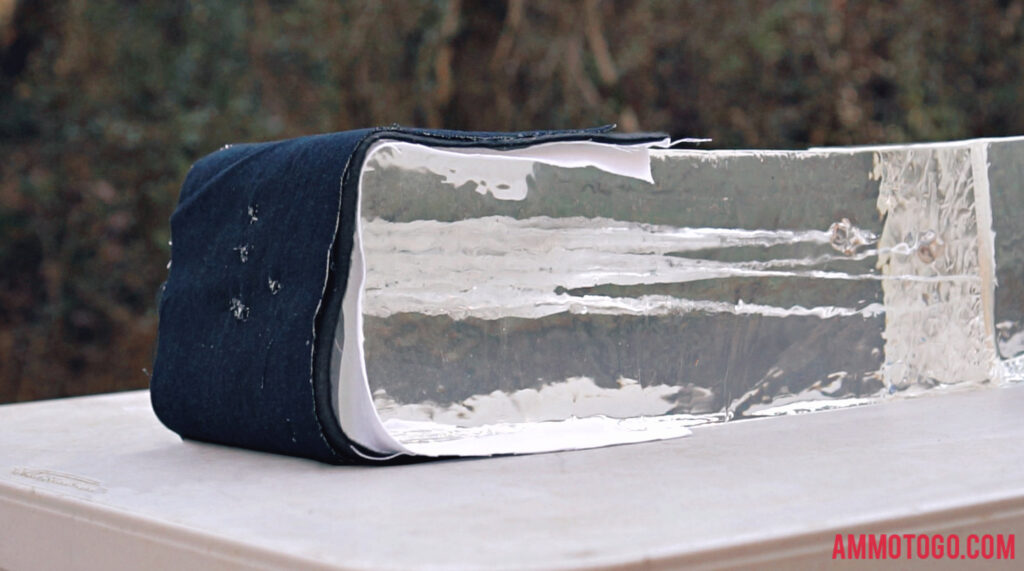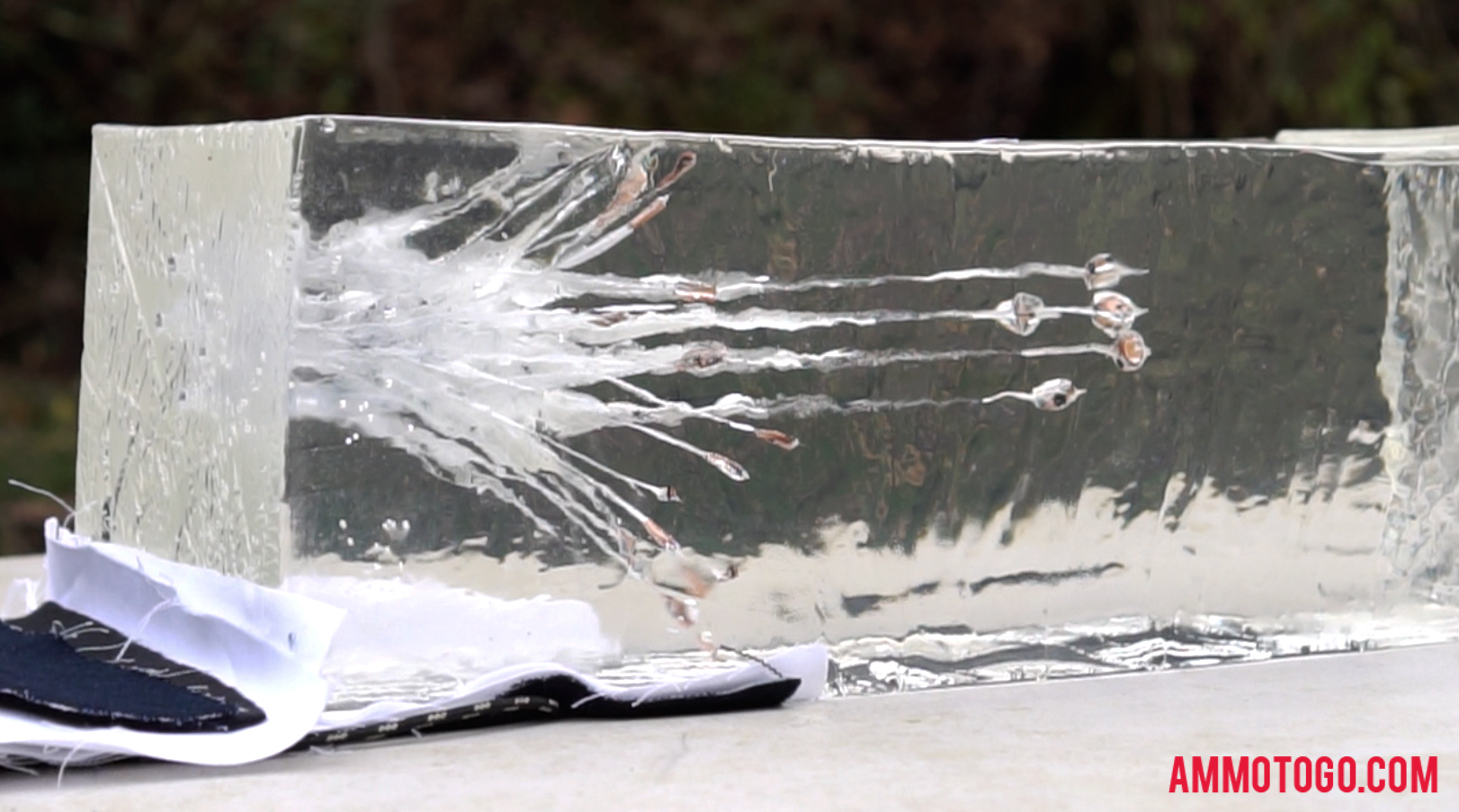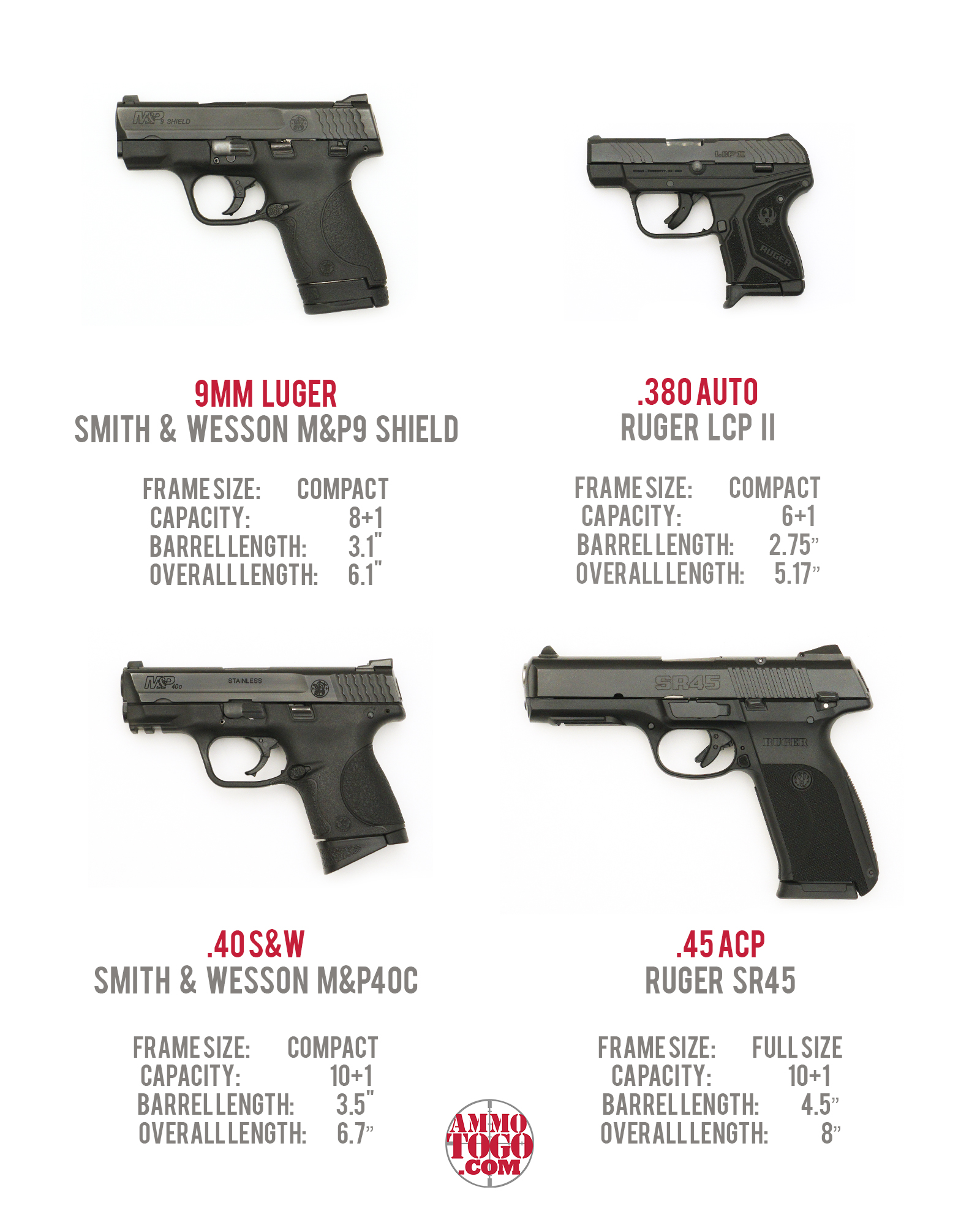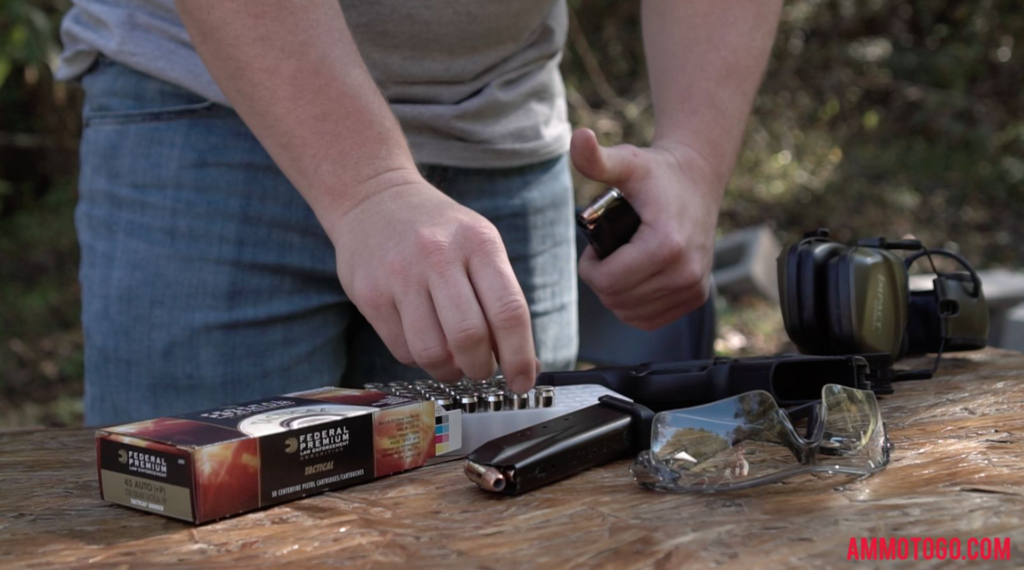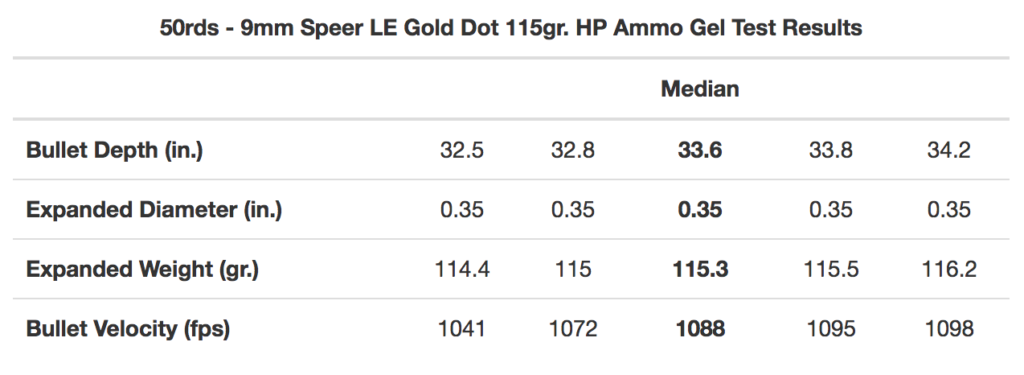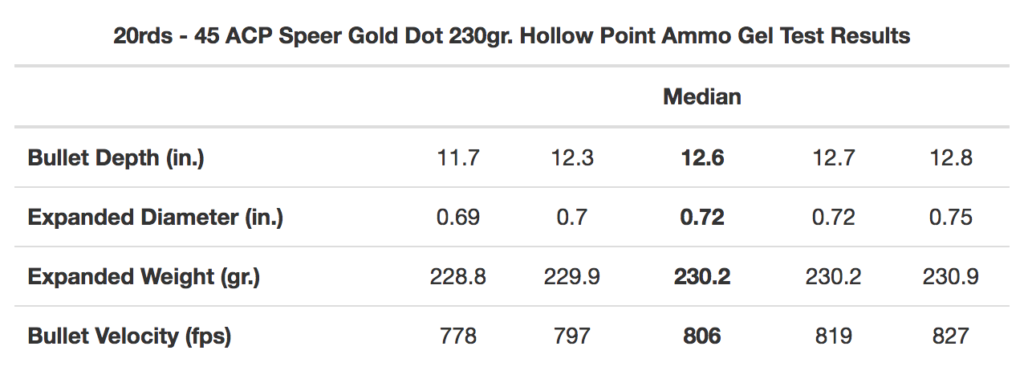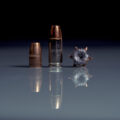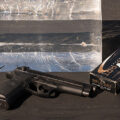The AmmoToGo.com team tests 143 different handgun loads through a 4-layer barrier into ballistic gelatin. Enjoy the treasure trove of data and see how each round compared under identical testing conditions to other ammunition options.
The Best Self-Defense Ammo
Ballistic Test Results by Caliber For Best Self Defense Ammo
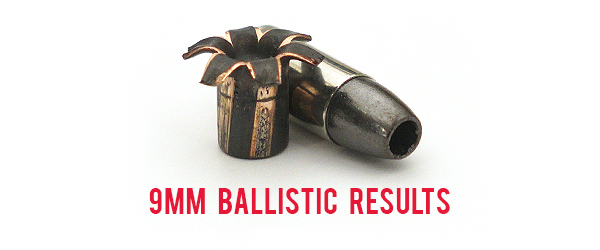 |
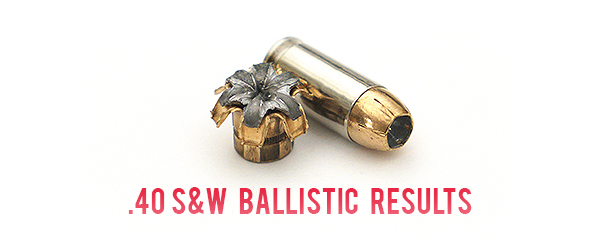 |
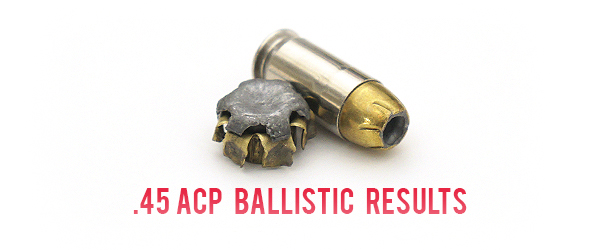 |
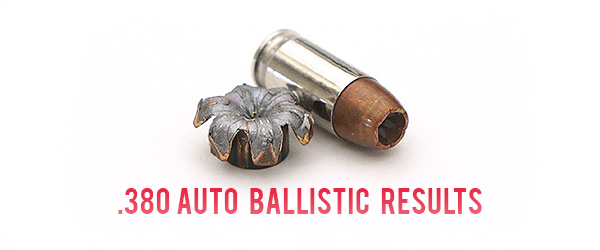 |
 |
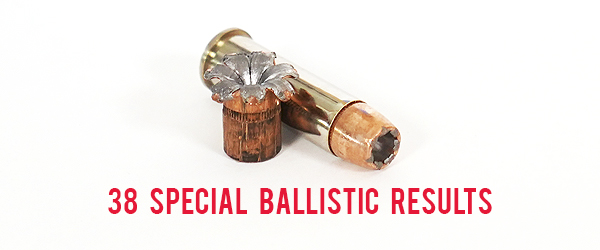 |
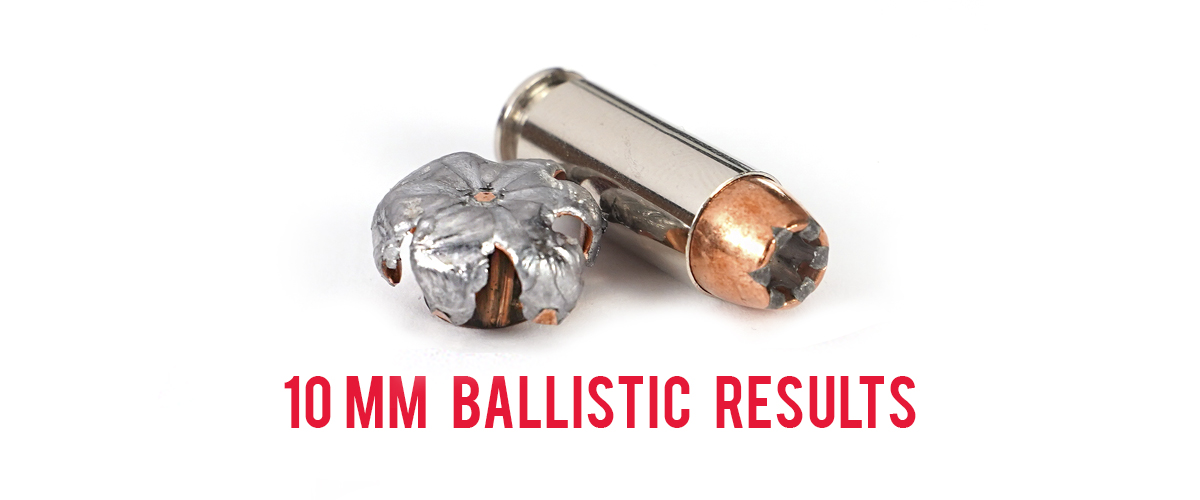 |
 |
Ballistic Testing Basics
For this project we followed many of the guidelines the FBI uses as testing requirements for their own duty ammunition. We analyzed penetration depth, retained weight, and the expansion capabilities for each hollow point projectile. You’ll be able to clearly see how each round performed under our test conditions.
FBI Ballistic Testing Protocol
The FBI test protocol runs through a full cycle of eight test events. Each event tests hollow point bullets by shooting them through barriers like wallboard, steel, and auto glass before penetrating ballistic gelatin. The ammunition is then tested for velocity and accuracy. According to the FBI, the results are an assessment of a bullet’s ability to inflict effective wounds after defeating various intervening obstacles commonly present in law enforcement shootings.
For our testing purposes we slightly deviated from the strict guidelines so that our results might reflect more of what a civilian may encounter in a self defense situation. We understand though that every defense situation is unique and we cannot just blindly group every shooting into a single category.
With that in mind, our test focused more on one of the eight test events in which the ammunition penetrates heavy clothing prior to impacting the ballistic gelatin. While these guidelines are in no way an absolute set of rules for testing self defense ammo, they provide a great backbone to build off of.
For our condensed version of the FBI test, we opted to simulate shooting through typical heavy cold weather clothing as our intermediate barrier. We placed the barrier in front of the gel, which consisted of one layer of Denim (14.4 ounces/yard), one layer of Polartec 200 fleece, one layer of cotton dress shirt (3.5 ounces/yard) and one layer of cotton T-shirt material (5.25 ounces/yard).
Ballistic Gelatin
The FBI uses what’s called 10% Ordnance Gel as their test medium. It is made of organic material, and is a massive hassle to deal with when testing ammunition. This makes storing the blocks for long periods of time difficult unless you have a commercial size freezer on hand. The blocks are also very opaque, making it hard to measure the damaging effects of the hollow point projectiles.
To avoid those hassles we used 10% clear ballistic gelatin material from Clear Ballistics to simulate living tissue. Each block used was six inches square by 16 inches long. Each block was calibrated for testing by Clear Ballistics prior to shipment.
Ballistic Barriers
A round’s performance can be greatly affected by the material or barrier the bullet travels through before impacting a target.
In real world defense situations you may find yourself dealing with a number of different barriers in between your firearm and the vital impact zone to take down a threat. This long list can be things such as other body parts, clothing, glass and a number of other obstacles that can alter the performance of a bullet. We fired all rounds tested at a distance of approximately ten feet from the front of the muzzle to the edge of the gelatin block’s fabric barrier.
While you can expect to see a decline in bullet performance when testing with heavy barriers such as wallboard and glass, a soft cloth barrier can actually hinder performance of a projectile just as much. Clothing materials tend to cause real problems clogging up the hollow tip of some brands of ammunition. This can prevent the round from expanding, in return making it less effective at stopping a threat. Unless someone is trying to attack you on the beach, it’s not uncommon to potentially encounter a threat wearing similar heavy clothing. Understanding how your self defense ammo performs when impacting this barrier can give you a leg up on a potential threat.
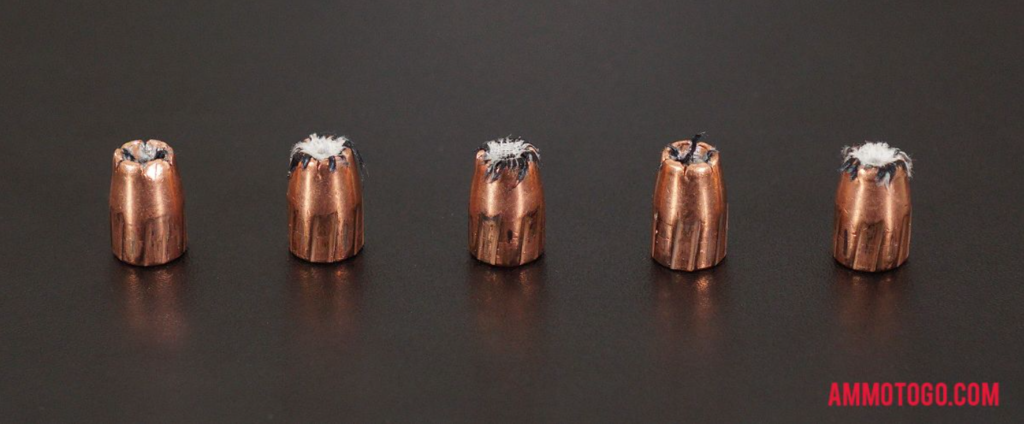
Terminal Ballistics for Self Defense Ammo
Self Defense Ammo Penetration
To meet the FBI penetration standard, a handgun bullet must consistently penetrate on average a minimum of 12 inches and a maximum or 18 inches into ballistics gelatin. This ideal penetration depth translates to reliable bullet performance to affect vital organs within a human target despite mitigating factors, such as angle of impact or intermediate barriers.
According to the FBI Test Protocol, “Given minimum penetration, the only means of increasing wound effectiveness is to make the hole bigger. This increases the amount of vital tissue damaged, increases the chance of damaging vital tissue with a marginally placed shot, and increases the potential for quicker blood loss.”Along with barriers, many other factors help determine how far a bullet will penetrate a target; The velocity at which the projectile is traveling, the design of the bullet itself, even the rate of expansion will all help determine the penetration depth.
Self Defense Ammo Expansion
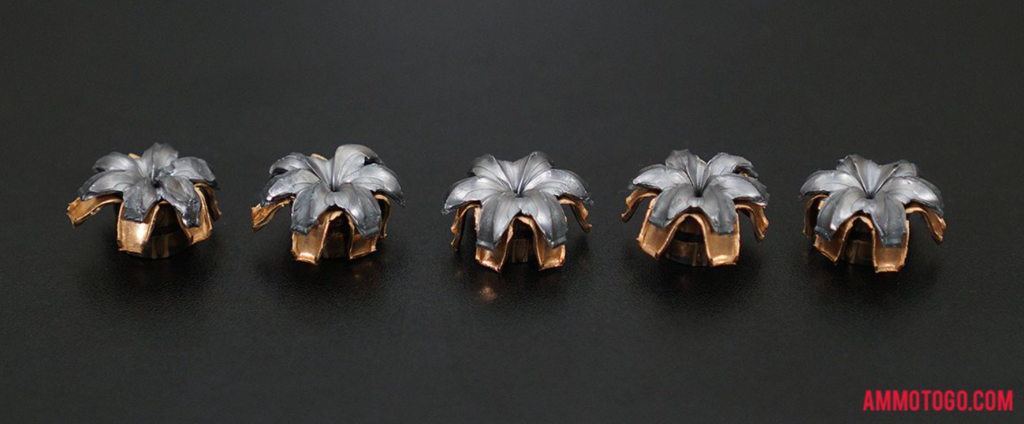
A consistently expanding self defense round is an attackers worst enemy. When a hollow point projectile impacts a target, the hollow cavity causes the bullet to deform or “mushroom.” This results in greater internal damage to a living target after impact. The expansion of a HP bullet creates a large wound channel, leaving devastating effects.Rounds that have a better rate of expansion typically penetrate less than rounds that do not successfully expand. This explains why FMJ ammunition generally isn’t considered a great choice for self defense, no real expansion takes place.
As far as successful expansion goes, a commonly used measurement is an expanded diameter at least 1.5 times the original diameter. This generally results in an adequate amount of expansion for a given caliber resulting in a “bigger hole” or wound cavity.
Self Defense Ammo Weight Retention
The weight retention capabilities of a self defense round can help a bullet achieve outstanding performance or fail completely. If a projectile breaks apart upon impact to a target the loss of weight that occurs can result in a corresponding loss of power. Sure, shrapnel can be deadly long term, but the main goal of stopping a life threatening presence is to stop that target as soon as possible.
Going back to the FBI protocol, “with the single exception of damaging the central nervous system, the only way to force incapacitation upon an unwilling adversary is to cause enough blood loss to starve the brain of its oxygen and/or drop blood pressure to zero. This takes time, and the faster hemorrhage can occur the better.”
Self Defense Ammo Velocity and Energy
One of the final steps in our testing process is to shoot the ammunition with a ballistic chronograph. This allowed us to measure the muzzle velocity of each projectile. The chronograph consists of two optical sensors that records the passage of the bullet over them. This helps us measure the muzzle velocity and muzzle energy of the ammunition being tested.
All bullets behave differently at various speeds. It’s is important to know the rate at which your handgun fires a certain brand of projectiles. The more consistently your self defense ammunition performs, the more reliable it is to you.
Firearms Used for Self Defense Ammo Testing
This is another aspect of FBI protocol that we didn’t strictly adhere to. We didn’t use full size duty handguns. We chose one firearm for each caliber that a civilian was most likely to carry concealed.
Our 357 magnum test results were obtained using a Smith & Wesson 640 J-Frame revolver with a 2.125″ barrel.
The length of your firearm barrel can have an effect on the velocity of a fired bullet.
Generally speaking, the longer the barrel the greater velocity a round will have. In other words, one load may not perform the same out of varying firearms and barrel lengths.
Best Self Defense Ammo by Caliber
-
Best 45 ACP Ammo for Self-Defense
-
Best 40 S&W Ammo for Self-Defense
-
Best 9mm Ammo for Self-Defense
-
Best 380 Auto Ammo for Self-Defense
These resources will help equip you with critical information to make the right decision for you and your firearm.
Are All Self Defense Ammo Brands the Same?
Self defense ammunition can be looked at like an insurance policy. You want something reliable that you can depend on when you need it most.
Always test your ammunition with your firearms to make sure it performs reliably. The degree of effectiveness of every round varies by firearm. It’s often hard to dismiss a brand completely just because it doesn’t perform as expected with a single handgun. Again, something that looks the best with one firearm may not be best in all pistols.
Switching Self Defense Ammo Brands
One example of this scenario can be seen below. 9mm Speer Gold Dot 115gr. ammo appears to deliver overall poor performance when fired from our M&P Shield. However, the 45 ACP Speer Gold Dot 230gr. ammo fired from our Ruger SR45 looked like a real winner.
Carry ammunition you’re comfortable shooting. A +P round, may help you in some cases. However, if you don’t like the extra kick it produces it may not be the right round for you. Never stop educating yourself when it comes to your firearm and the ammunition you use and trust your life with. Remember, consistency is the key to good performance.
Quick Links to the Test Results:
Editor’s Notes:
On April 24, we added two additional calibers to our testing. You’ll find 22 WMR and 10mm loads now added to our project. For the 22 WMR, we used a Ruger LCR revolver with a 1.87″ barrel. For the 10mm, we used a Glock 29 with a 3.78″ barrel.
On September 19, 2018 we added an additional caliber to our test results. On this date we added 22 different 357 Magnum loads to the project. Results in this batch documented while using a Smith & Wesson 640 J-Frame Revolver with a 2.125″ barrel. All other conditions for testing were identical to other tests.
On March 27, 2018 we added an additional 16 loads to our test results. These results included one that we’ve been asked about a lot, Winchester’s Ranger T JHP. This update includes new test results in 9mm, 380, 40 S&W and 45 ACP.

